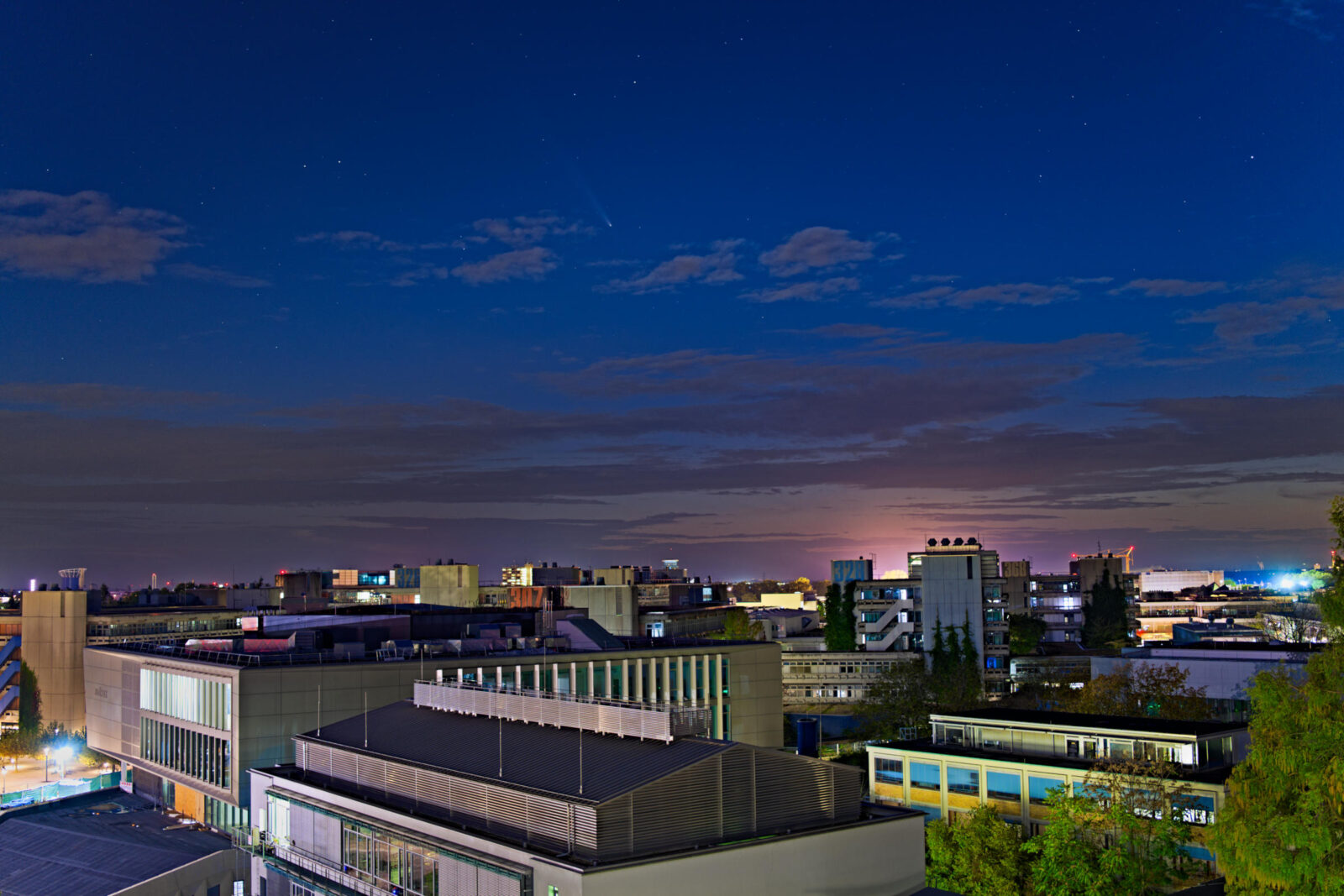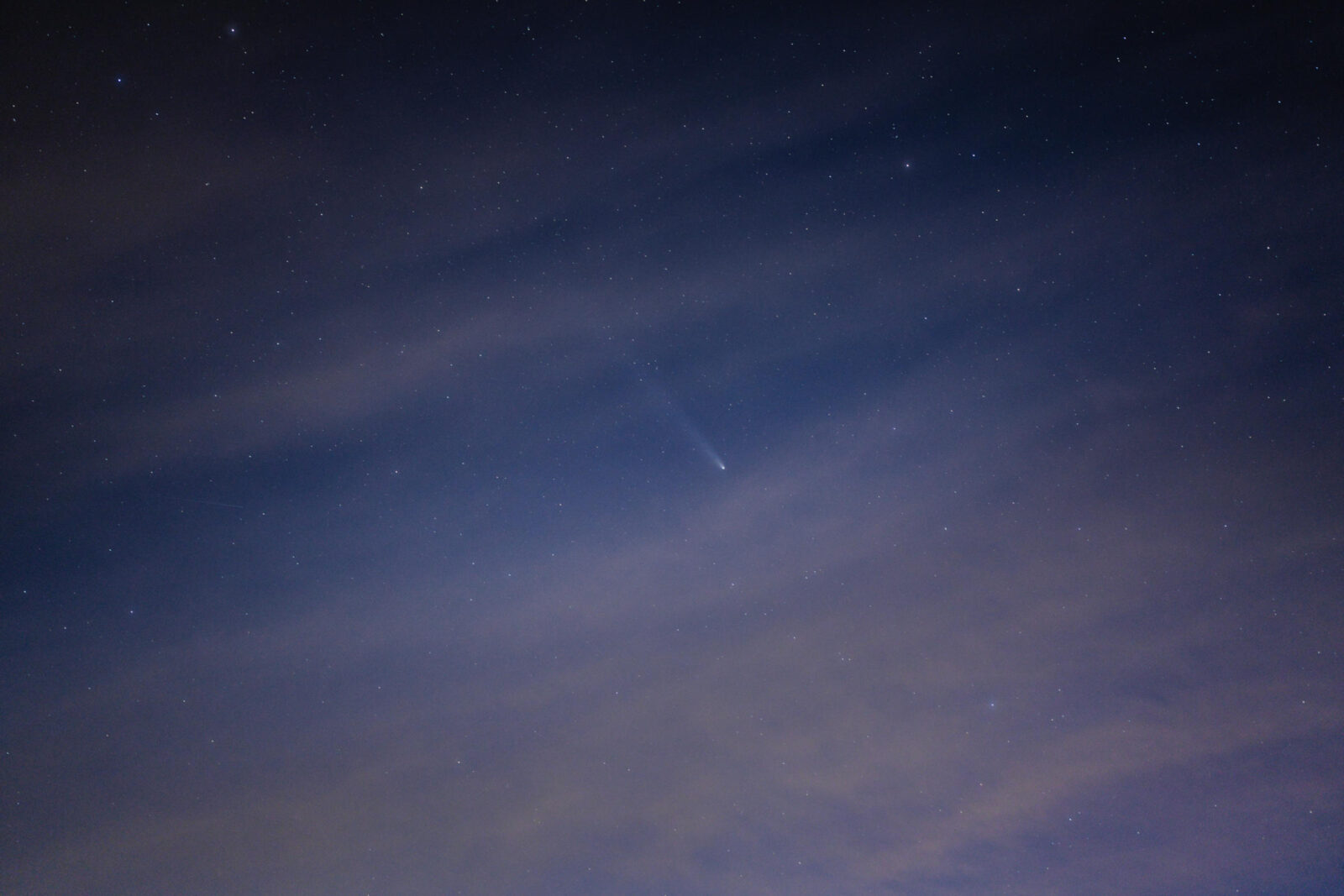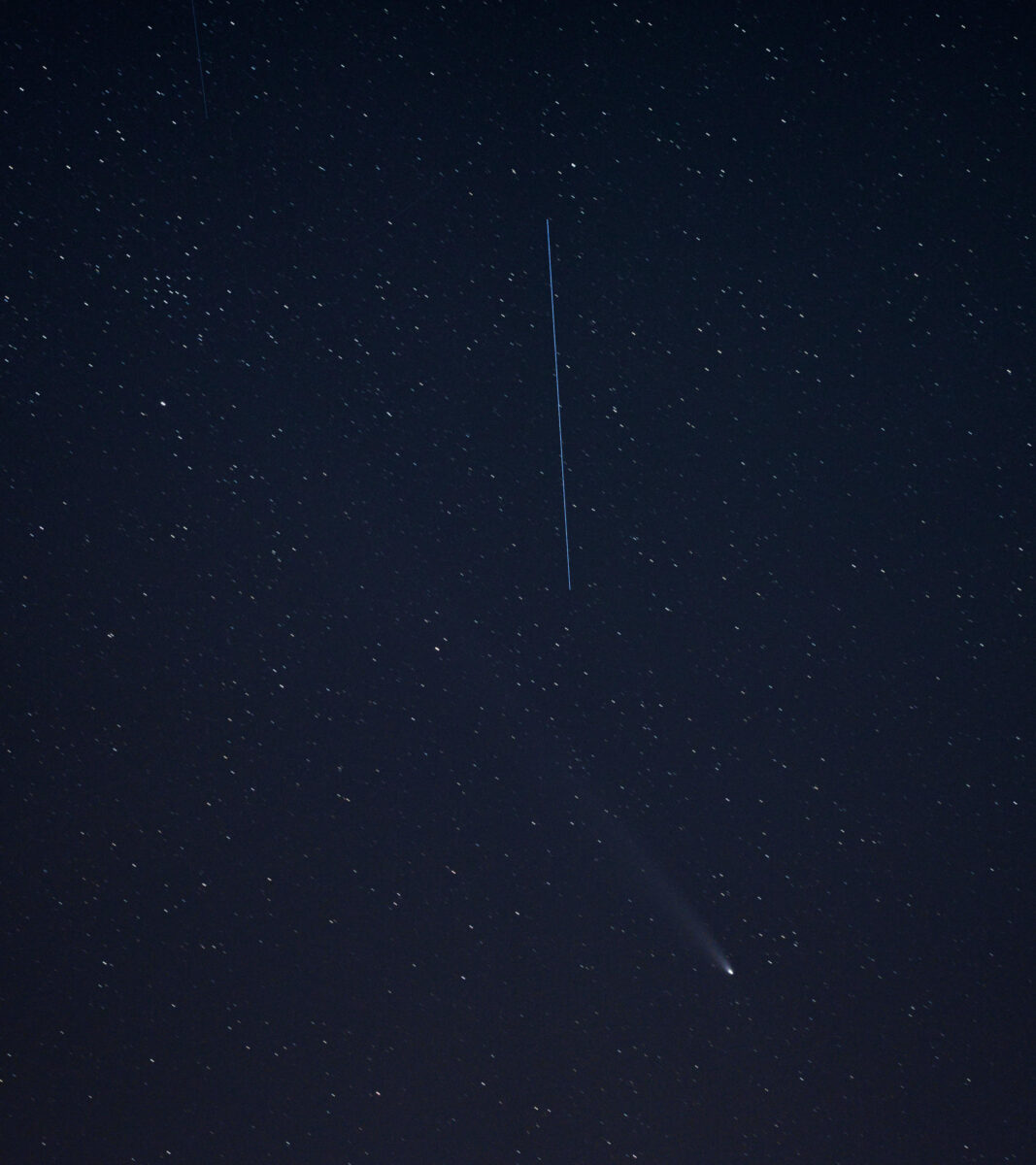C/2023 A3 passed through its perihelion on 27.09.2024, after which its absolute brightness steadily decreased. It reached its smallest distance to Earth on 12.10.2024 and I was able to see it effortlessly as a bright object on the western horizon for the first time on the evening of 13.10.2024. However, I didn’t have a camera with me.
As the weather was very bad the following days, I was only able to take a few photos of the comet under unfavorable conditions at times where the brightness had significantly decreased.
These pictures were all taken from the 5th and 6th floor of a building on the campus of University of Heidelberg. On all days, the view was not only severely obscured by clouds, but also by haze. In fact, the comet was only visible in the finder of the camera, but not to the naked eye.
The first image shows the comet with the campus in the foreground on 16.10.2024 at 17:47 UTC and was taken with a fast 35mm objective. The comet was located in the constellation Serpens Caput at a distance of 76.6 Gm, with an altitude above the horizon of 15°.

Due to the weather, the second image was not taken until 6 days later, on 22.10.2025 at 17:38 UTC with a fast 85mm objective from a distance of 99.6 Gm. The comet was now already 26° above the horizon and had moved into the constellation Ophiuchus.

Finally, the third photo was taken one day later, on 23.10.2024 at 18:06 UTC from a distance of 104.4 Gm, at an altitude of about 24°, again with f=85mm. At this time, the comet was on one of the orbital plane of Starlink satellites, so that they continuously passed through the image field. As soon as one was gone, the next one had arrived. This shows the extent of the pollution of the night sky by these constellations. Due to the exposure of 10s, the satellite is distorted into a long streak. In the extension of the comet’s plasma tail, at the top left of the image, you can see a concentration of stars: it is the open star cluster IC 4665, which is about 340 parsecs from Earth. Open star clusters are groups of stars that have formed together from a giant molecular cloud.
